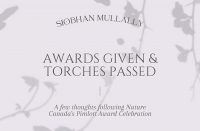Driven by curiosity, artist and filmmaker Shinpei Takeda travelled with a friend along the west coast of Canada, the US and Mexico to visit immigrant survivors of the Hiroshima and Nagasaki atomic bombs and document their gripping, lingering stories of pain, suffering and loss. His documentary begins with a stark reminder of the magnitude of the events of August 6 and 9, 1945, whose explosions and radiation killed more than 210,000 by the end of that year.
Driven by curiosity, artist and filmmaker Shinpei Takeda travelled with a friend along the west coast of Canada, the US and Mexico to visit immigrant survivors of the Hiroshima and Nagasaki atomic bombs and document their gripping, lingering stories of pain, suffering and loss. His documentary begins with a stark reminder of the magnitude of the events of August 6 and 9, 1945, whose explosions and radiation killed more than 210,000 by the end of that year.
Takeda’s road trip starts in Vancouver with interviews of three survivors. All of them are well into their seventies and eighties. Takeo Yamashiro was two years old when he was exposed to atomic radiation, as his mother carried him on her back amid the ruins in search of their home. Mary Yamaoka lost her 13-year-old sister and her father from the bombings. Myuizi Broadwater recalls graphic memories of people, animals, dogs and cows “burned like charcoals.” She breathes a sigh of relief after telling Takeda her story, because “all this time, it was bottled up in here…unable to tell anyone.”
Watching and listening to the survivors’ painful memories inevitably brings up existential questions. How could events like Hiroshima and Nagasaki happen? How could humanity resort to using such destructive methods? What is the value of a human life?
Takeda and his friend become increasingly overwhelmed as they accumulate stories, becoming sad, frustrated and confused. But in the act of listening, they begin to bear some of the emotional burden that the survivors have carried with them their entire lives.
The last survivor interviewed is Takashi Tanemori, who was playing hide-and-seek about a kilometre away from where the Hiroshima bomb exploded. Tanemori weeps as he describes the cruelty of what he saw and the details that made the bomb so personal. His mother and baby sister, who was only 14 months old at the time, died immediately. His father died in his arms one month later.
Hiroshima Nagasaki Download is profound and the stories it collects from survivors must not be forgotten. Their words remind us of the value of a life and what pain feels like. Although a relatively low-budget production, the film achieves a surreal style that blends interview footage, spontaneous road trip moments and historical war footage, all set to solemn but spiritual hymns. The project was a collaboration between Takeda and the United Nations Office for Disarmament Affairs, created to help bring awareness to the dangers of nuclear weapons and to recognize that nuclear events are human stories with global consequences.
Hiroshima Nagasaki Download, directed by Shinpei Takeda, US/Japan: Third World Newsreel, 2010, 73 minutes.
Reviewer Information
Andrew Wong is a uWaterloo student and an A\J editorial intern. He led the Students on Ice alumni delegation to the UN Conference on Sustainable Development in June 2012, and was named Canada’s Next Green Journalist by Environmental Defence in 2011.












